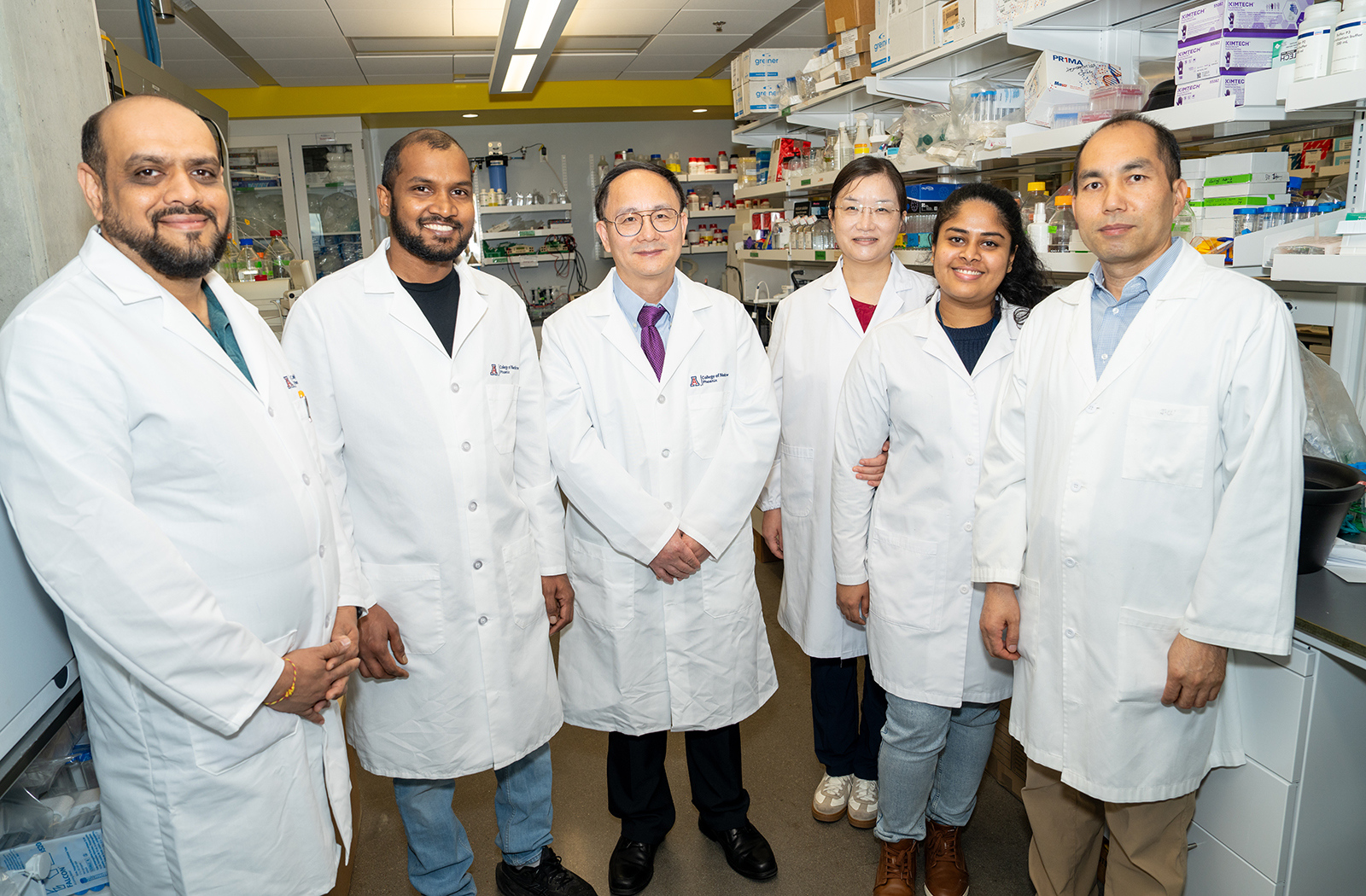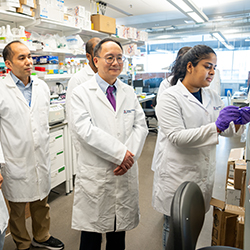
Groundbreaking Metabolism Research Receives $6.8 Million in Funding

The liver serves as the body’s central metabolic hub, converting nutrients from food into the energy and molecules necessary to sustain life. It also plays a vital part in regulating lipid, protein and carbohydrate metabolism, processes essential to maintaining heart and vascular health. When liver metabolism becomes disrupted, it can lead to conditions such as fatty liver disease, obesity, diabetes and atherosclerosis — all of which significantly increase cardiovascular risk.
At the University of Arizona College of Medicine – Phoenix, Yanqiao Zhang, MD, tenured professor of Internal Medicine and director of the Diabetes, Obesity and Metabolism Program, is leading studies to better understand how the liver communicates with the heart and how metabolic dysfunction contributes to cardiovascular disease. His lab has recently secured more than $6.8 million in research funding across three major projects that examine how molecular pathways in the liver influence lipid metabolism, inflammation and heart disease.
“Our research focuses on atherosclerosis, fatty liver disease, obesity and diabetes. All are deeply connected through liver metabolism,” Dr. Zhang explained. “The liver regulates lipid and protein metabolism and plays a central role in inflammation, so it’s essential to understand both liver and heart disease.”

One of Dr. Zhang’s key projects investigates Transmembrane Protein 141 (TMEM141), a molecule that may hold information on how the liver manages cholesterol levels. “This protein is very new; you can hardly find any literature on it,” Dr. Zhang said. “We discovered that TMEM141 is regulated by a nuclear hormone receptor called FXR, which is known to control lipid and glucose metabolism and insulin sensitivity.”
Dr. Zhang’s lab is exploring how TMEM141 affects lipid transport and cholesterol metabolism. Their early studies suggest that reducing TMEM141 expression in the liver significantly lowers LDL cholesterol, the “bad” cholesterol responsible for plaque buildup in arteries. “We found that knocking out this protein in the liver reduces plasma LDL cholesterol and prevents atherosclerosis,” he explained. “Now we’re studying whether modulating this protein could lead to new treatments for coronary artery disease.” By revealing how TMEM141 controls lipid metabolism, Dr. Zhang’s work could pave the way for next-generation cholesterol-lowering therapies that complement or improve upon statins and PCSK9 inhibitors.
Another major focus of Dr. Zhang’s research centers on hepatic forkhead box A3 (FOXA3), a transcription factor that helps regulate gene expression in the liver. His team has discovered that FOXA3 levels are reduced in patients with alcohol-associated liver disease (ALD), one of the most common causes of advanced liver failure and transplantation worldwide.
“When we overexpress FOXA3 in the liver, it can prevent and even reverse alcohol-associated liver disease,” Dr. Zhang said. “This protein protects liver cells by inhibiting another molecule called CIDEC, which contributes to liver injury.” The findings could help address a major gap in treatment for alcohol-associated liver disease, where effective pharmacological options remain scarce. By uncovering how FOXA3 preserves liver function, Dr. Zhang’s work may guide the development of novel mRNA or small-molecule therapies that restore or enhance FOXA3 activity.
Dr. Zhang’s third project focuses on Metabolic dysfunction-associated steatotic liver disease (MASLD) — formerly known as nonalcoholic fatty liver disease — and its strong association with cardiovascular disease. People with MASLD are up to three times more likely to develop coronary heart disease, but the biological connection between these conditions is not fully understood. “We think the liver may communicate with the heart through exosomes — tiny vesicles that carry microRNAs, proteins and other molecules into the bloodstream,”
“These exosomes can be taken up by heart cells and may influence cardiovascular function,” Dr. Zhang detailed. His lab is isolating exosomes from patients with MASLD and using advanced RNA sequencing and proteomics to identify the specific molecules they carry. The goal is to determine which of these factors contribute to inflammation, lipid dysregulation or damage in heart tissue. “If we can pinpoint the key molecules, they could serve as biomarkers for early detection or even as therapeutic targets,” Dr. Zhang said. “This research could help explain why patients with fatty liver disease are at such high risk for heart disease.”
This interdisciplinary approach allows his team to bridge basic science and clinical medicine, accelerating the translation of discoveries into practical therapies. “The liver and heart are closely connected,” Dr. Zhang emphasized. “When lipid metabolism in the liver is impaired, LDL cholesterol and inflammation rise, which can trigger atherosclerosis. Improving liver metabolism, on the other hand, helps protect the heart.”
Ultimately, Dr. Zhang’s work aims to identify new biomarkers and molecular targets that can be used to treat both liver and cardiovascular diseases. “Once we understand the key pathways, we can design drugs to enhance or inhibit specific targets,” he said. “Our goal is to push the boundaries of what we know about the liver-heart connection. By understanding metabolism at the molecular level, we can develop new ways to prevent, treat and ultimately reverse disease.”
About the College
Founded in 2007, the University of Arizona College of Medicine – Phoenix inspires and trains exemplary physicians, scientists and leaders to advance its core missions in education, research, clinical care and service to communities across Arizona. The college’s strength lies in our collaborations and partnerships with clinical affiliates, community organizations and industry sponsors. With our primary affiliate, Banner Health, we are recognized as the premier academic medical center in Phoenix. As an anchor institution of the Phoenix Bioscience Core, the college is home to signature research programs in neurosciences, cardiopulmonary diseases, immunology, informatics and metabolism. These focus areas uniquely position us to drive biomedical research and bolster economic development in the region.
As an urban institution with strong roots in rural and tribal health, the college has graduated more than 1,000 physicians and matriculates 130 students each year. Greater than 60% of matriculating students are from Arizona and many continue training at our GME sponsored residency programs, ultimately pursuing local academic and community-based opportunities. While our traditional four-year program continues to thrive, we will launch our recently approved accelerated three-year medical student curriculum with exclusive focus on primary care. This program is designed to further enhance workforce retention needs across Arizona.
The college has embarked on our strategic plan for 2025 to 2030. Learn more.